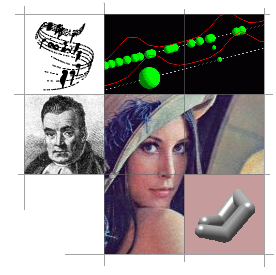This software from this lab could be a cure for BlackBerry "buzz"


It's a good bet that while I was out yesterday, many of you were reading a piece in the Wall Street Journal entitled, "Trying to Minimize A Lot of the Buzz About BlackBerrys."
The piece explores the reasons for "Blackberry buzz." Article authors Dionne Searcey and Jessica E. Vascellaro accurately defines the phenomenon as a "mosquitolike noise (that) happens when the electrical circuitry of a phone or other electronic device converts cellphone radio waves into audio waves. This happens specifically with a type of wireless technology that transmits data in a series of pulses that cause the buzzing sound.
Several interesting citations of BlackBerry buzz were provided, including what happened when:
Speaking at a broadcasting industry convention with members of the cast of "Everybody Hates Chris," a techie named Grant Cohen pulled out his BlackBerry. Unfortunately, the giant speaker near Cohen's seat picked up the BlackBerry signal and sent it out over the house audio system.
On BlackBerryForums, software consultant Mark Kimmey said the noise got so awful on his phone headset that he;s wrapped a piece of aluminum foil around his device.
But University of Cambridge (England) PH.dD. technology student Han Lin- a victim of BlackBerry buzz himself- has designed software that seems to help.
According to the WSJ:
The "AR Template Interpolator," as (Lin) calls it, is a piece of software that can be downloaded to a computer or to another mobile device. When connected to loudspeakers, the interpolator captures a print of the cellphone's radio pulse, creates an opposing pulse of the same size and injects the opposing pulse to the speaker system. By the time the original signal from the cellphone travels to the speaker, the speaker has registered the opposing pulse and the noise is filtered out. The idea hasn't gone beyond lab testing so far, says Mr. Lin.
Lin is no garden-variety lab rat. He's studying audio restoration methods for wireless audio applications at Cambridge's Signal Processing and Communications Lab. OBTW: that's their cool logo, at the top of this post.
By virtue of Lin's pursuits, we should take him seriously.
BlackBerry-maker Research In Motion thinks that forthcoming hardware advances will help. A RIM spokesperson told the WSJ that getting there is a matter of better shielding for handsets, speakers, and even alarm-clock makers.